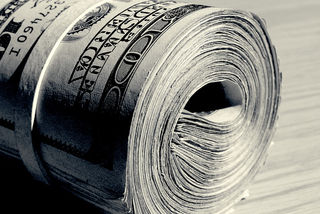Career
When Does Pay What You Want Pricing Work?
It can be effective for last-minute sales and to raise money for charity.
Posted March 5, 2017 Reviewed by Ekua Hagan
I am sure that at one time or another, many marketers have considered using a Pay What You Want (PWYW) pricing scheme to sell their products. On the face of it, it seems such an alluring idea, predicated on human decency and reciprocity. PWYW pricing is simple: Provide a good-quality product to customers, let them enjoy it, and then give them complete discretion to pay whatever they want for the product. No bills, no claims (although sometimes there may be a posted suggested price), pay if you want to (and as much as you want), don’t if you don’t.
The business logic behind PWYW pricing is two-fold. First, the company conveys confidence, essentially telling the customer "we are so sure you will like our product that you will pay for it." The second reason behind PWYW pricing is to empower customers. The company gives total control to the customer to weigh the value they have gotten from the product, and pay an appropriate price (weigh then pay).
But this transfer of power is a double-edged sword. With PWYW pricing, many dishonest customers could walk away without paying anything, or underpay significantly, leaving the business in dire financial straits. Still other customers may be honest, but could feel confused and conflicted about what the appropriate price is, and stay away altogether.
Cautionary tales of PWYW pricing

Last October (2016), a new restaurant in Guiyang China decided to try out PWYW pricing as a trial pricing strategy. Its motives relied on a give-and-take logic. The restaurant had just opened its doors and wanted to encourage as many customers to try it as possible. So it launched with a PWYW price promotion for a limited time. During this promotion, customers could order as much food as they liked and pay whatever they wanted after the meal. No questions asked. Like most trial pricing schemes, the restaurant expected to lose a bit of money but gain new customers who would come back.
What actually happened to the restaurant was disastrous. Within a week, it had lost over 100,000 RMB (around $15,000 at the time). Even worse, the day after the promotion ended, not a single person showed up to eat there at the regular price, leaving the restaurant owners shattered. One owner pitiably concluded:
“If our food or service was the problem, then that would be one thing. But according to customer feedback, our dishes are both filling and tasty. It's just that the payments don't match up with the evaluations.”
Other restaurants in China have tried PWYW pricing before, and have suffered similar consequences. One restaurateur wanted to restore “a long-lost sense of trust in Chinese society” but lost 250,000 RMB (or $37,500) in three months after opening his restaurant.
In Europe, a rigorously conducted field experiment by marketing professors in a Frankfurt, Germany restaurant found that when the 8.99 Euro lunch buffet was turned into a PWYW product for two weeks, customers paid 19% less. They paid 28% less for movie tickets in a theater. In a café, however, customers paid 10% more for cappuccinos and espressos under the PWYW price than the fixed price. On balance, PWYW pricing led to lower earnings per customer but more customer visits.
Closer to home, Panera Bread has repeatedly tried PWYW pricing in some of its US stores but hasn’t achieved consistent success.
Three cases where PWYW pricing is successful
Despite these failures, there are some instances where PWYW pricing has been shown to work. Here are three cases where it has shown to be effective.
- For last-minute sales to fill empty capacity. Hotels, airlines, and even the Indianapolis zoo vary their prices considerably in response to consumer demand. With higher demand, prices rise. They drop when demand is low. These products are all perishable (an empty seat on an airplane is wasted once the flight departs), so it makes sense to use PWYW pricing to fill empty capacity. The Tricycle theater in Kilburn England does just this. PWYW tickets are only available for some performances, even then they can be purchased only on the day of the event, not in advance. This allows the theater to fill its seats with thrifty people who buy PWYW tickets last-minute seats at lower than regular prices.
- Where the customer has a previous personal relationship with the business. As the Chinese and German restaurant PWYW pricing failures showed, PWYW pricing doesn’t work for new businesses as a way to induce trial among new customers. New customers have no attachment or emotional commitment to the business. They tend to use PWYW to get a deal and then disappear. This is what happened with many Groupon and LivingSocial promotions a few years ago. When customers know the owner and have to hand over money face-to-face, they are more likely to pay fairly. The authors of the German field experiments attributed the café’s success with PWYW pricing to its chatty owner, who knew all his guests personally. PWYW pricing worked for him because guests felt a connection to him and the café. They tended to pay more instead of less under PWYW pricing. Similarly, when the band Radiohead famously released its album “In Rainbows” digitally with a “digital tip jar,” it was a financial win. The band ascribed this success to its existing base of loyal fans.
- When the earnings are given to a charity. In a 2010 paper in Science, a team of researchers led by Ayelet Gneezy conducted a field experiment selling souvenir photos after a roller-coaster ride using PWYW. Some customers were told half the money collected would go to charity, others were told nothing. Without the charity explanation, customers only paid $.92 for their picture. In the charity condition, however, people paid $5.33. For context, the normal price was $12.95. The authors deemed the incremental sales with PWYW pricing (far more people purchased the photograph) to be a success. Similarly, restaurants all over England use PWYW pricing to sell food they would have thrown away, doing two positive things at the same time: generating additional revenue and reducing food waste. In the US, a number of experimental restaurants have started using PWYW pricing recently to feed the needy. But these ventures are financially supported by religious organizations and philanthropists. They are usually not-for-profit businesses.

For most companies, PWYW pricing is not a genuine strategic pricing strategy. In fact, I haven’t yet come across a company that uses it consistently to make money and thrive in the marketplace.
As a specialized pricing strategy that is used for very specific reasons like filling empty seats at the last minute, or using up food that would have gone to waste, or as a way to raise money for charity, PWYW pricing is useful. There are enough decent people in the world to make this idealistic pricing scheme work for some time and in some situations.
Do you know of any success or disaster stories of companies using PWYW pricing? I would love to hear about them.
PS: Here's a counter-example of a longer-term success story of PWYW pricing that a reader pointed out to me: Der Wiener Deewan is a Pakistani restaurant in Vienna Austria that has been successfully using PWYW pricing for over a decade (since 2005). It uses the "all you can eat" and PWYW model in tandem. Here's the owner's logic for using PWYW pricing (and it's hard to argue with):
"We give trust and it comes back! We can trust in people’s capacity to think for themselves: If they did not pay at least a fair price and we therefore had to close, where would they find such a good meal for such a cheap price then?"
My forthcoming book is titled How to Price Effectively: A Guide for Managers & Entrepreneurs.




